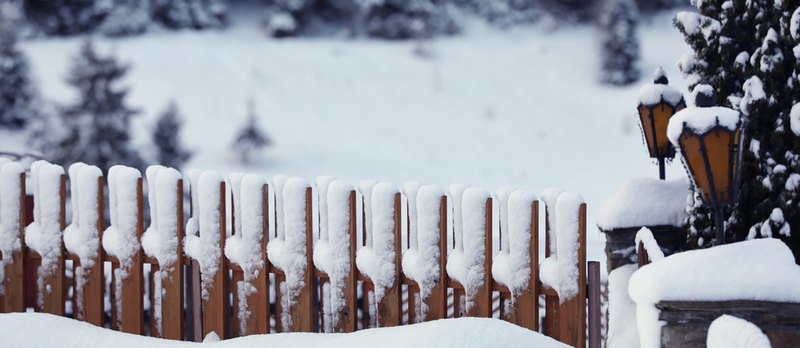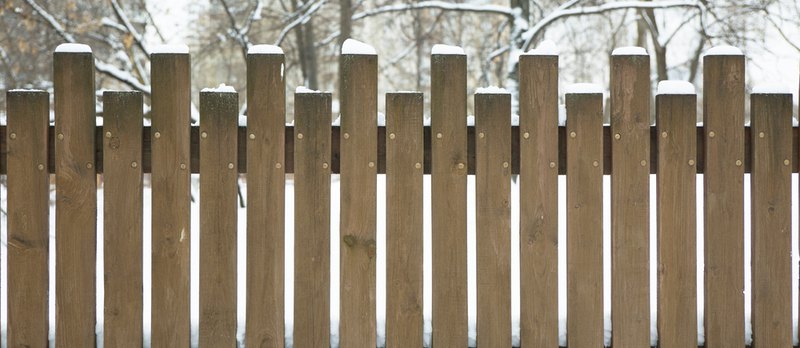Winter is just around the corner, and if you want to protect your wooden fence and save it from harsh weather conditions, you need to be attentive. Winter is highly harsh on wood and can wear it down. For instance, snow, rain, sleet, and falling branches all damage the wooden fence differently. And while you cannot control winters, you can learn how to protect wood fence. Lucky for you, our lumber company knows all about this.
The following are some ways for wooden fence post protection against the freezing cold. Let’s discuss them in detail.
First Things First: Learn How to Treat Wooden Fence
Trim Trees And Foliage
How to treat a wood fence? Trim the surrounding trees and foliage. It is essential to keep branches, leaves, and grass at least 3 feet away from your wooden fence to protect them. All of these can damage your fence in different ways. For instance, nearby branches sway in the chilly breeze and can put pressure on the wooden slats, leading to cracks or a part of the fence falling altogether.
Another way branches damage wooden fences is by holding snow; even if they manage to hold up the snow and not fall on your wooden fence, the ice melts and drips on the wooden slats. Wood is highly porous and absorbs moisture. The accumulating water will expand and contract as the weather changes, which causes the wood to crack.
Similarly, by clearing away the debris, grass, and fallen leaves from the bottom of the wood fence, you can prevent moisture buildup and protect the wooden fence longer.
Fix Leaning Posts

Maintaining and protecting the bottom of the fence is easier said than done. Whether your fence is old or the harsh weather conditions are taking a toll, any fence can fall victim to leaning posts. The primary reason your fences are leaning is that the posts are not correctly installed, and the chilly weather is not helping.
Fence posts are generally installed 36 inches deep into the ground. This is done so that the bottom of the post is below the frost line and is not affected by the shift of the ground during weather changes. The ground shifts due to the constant water freezing and thawing and can cause the upper layers to move; if the posts are not deep enough or secured enough, they can lean.
The following are the steps you can take to fix leaning posts:
- First, analyze the situation. Why is the fence leaning? Has the wood rotted at the bottom? Has the ground shifted? Or is the metal bent due to impact?
- Then, you need to straighten the fence by relieving pressure and freeing it from the rest of the fence structure.
- Now, you need to excavate around your post, 18 inches around and about 2 feet down, so the post can fit snuggly.
- Lastly, fill the hole with dry, rocky soil or concrete for a more robust solution to protect the wooden fence.
Keep Fence Clean And Dry
How to protect a wooden fence? Keep it clean and dry. As mentioned above, wood is highly porous and absorbs moisture, mildew, fungi, and other disastrous organic material below its surface. As the weather changes, the absorbed water freezes and thaws, causing cracks in the wood. If not prevented, the freeze-thaw cycle will continue, making the existing cracks bigger and damaging the integrity of your fence.
There are many ways of weatherproofing wood fence, such as:
- Remove any snow on and around the fence to prevent moisture buildup.
-
Check the fence every few months for termites, wasps, etc.
- Look for signs of weakness and remove fences with holes or water damage, as they can also damage other slats.
- Apply a protective wood stain. Applying a stainer every winter is recommended, even if your wooden slats are stained. They don’t promise 100% protection from harsh weather conditions but increase their lifespan significantly.
Repair the Fence If Necessary
How to preserve a wooden fence? By taking care of it and taking immediate action to prevent further damage. If you notice a wooden slat is water damaged, has cracks, or is leaning, fix it immediately by calling a professional or doing it yourself. The faster action you take, the more money you save. For instance, a water-damaged fence will also ruin the nearby fences, decreasing the whole structure’s stability and integrity.
Increase Fence Visibility
You won’t always be available to remove the snow gathered on your wooden fence, which can be a problem. In winter, the snow, heavy rain, and sleet make it difficult to see the white-colored fence on the side of the road; thus, therefore, to ensure cedar fence protection from cars, increase its visibility. You can do this by tying brightly colored flags or reflective tags on the fence posts. This will help motorists and drivers see your fence clearly on heavy blizzard days.
For More Tips On Wooden Fence Post Protection & More, Get in Touch

If you want to protect wooden fence throughout the year, here are some more tips to help you maintain its structure and integrity.
- Remove loose branches and fallen leaves around the fence.
- Remove ice using a shovel or brush.
- Trim the surrounding foliage.
- Call professionals.
Wooden fence post protection is no easy task; thus, it's better to call professionals and ensure your fence is secure and protected from further damage. Cedar Supply is a trusted lumber company that offers top-quality service. We are the largest supplier of cedar fencing in all of Northern Colorado. Call now for a quote.

